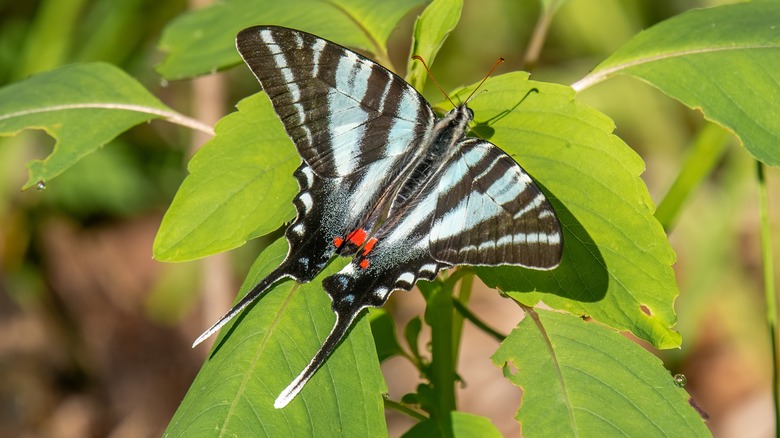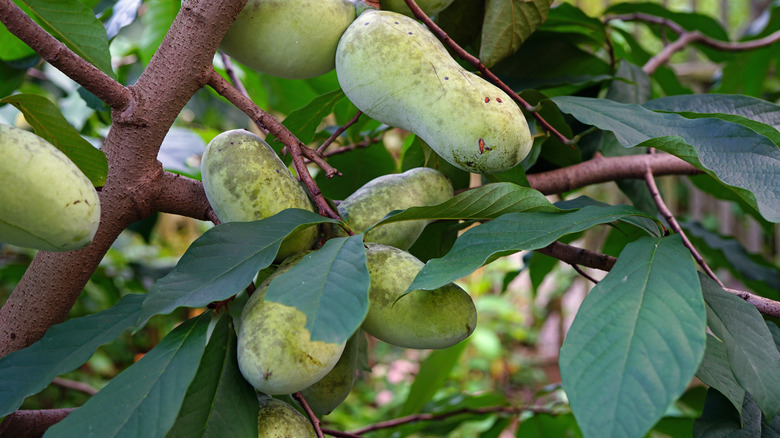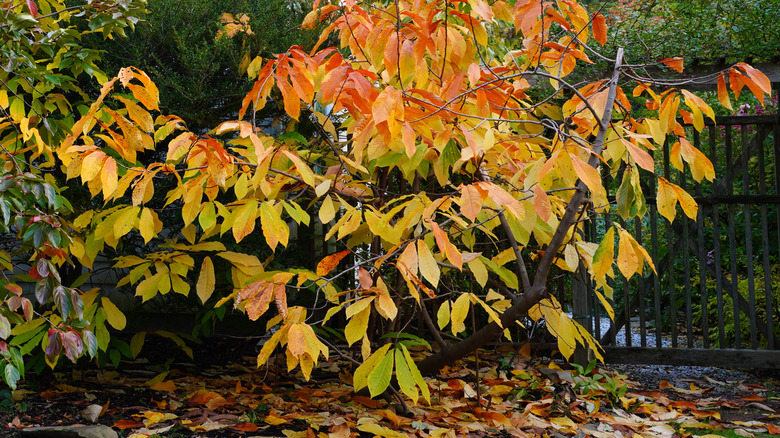The Pawpaw Tree Is Sure To Attract Zebra Butterflies (& Has Another Big Benefit)
If you've ever wandered through the woods or planned an elaborate hike, you might have looked around yourself and wondered, how did so many native people survive here hundreds of years ago? Where did they find enough food? But natural, native food sources are all around us. There are well over 1,600 plant species that Native Americans traditionally used for food, from corn to tomatoes, raspberries, chokecherries, sunflowers, and more. While North America has lots of native edible plants, there aren't very many fruit trees that grow naturally here. Of the fruit trees that originate from North America, not many produce sizeable fruits, but one exception is the pawpaw tree, a small tropical fruit tree that grows freely throughout much of North America.
The pawpaw tree is a perfect option for gardeners who prefer to grow native plants and support local wildlife — especially enchanting pollinators like the zebra swallowtail butterfly. Without pawpaw trees, these eye-catching garden visitors would rapidly decline in numbers. When you first hear about the pawpaw tree, you might think it sounds like a funny nickname for a grandfather. While grandpas don't grow on trees, delicious pawpaw fruits do! Here's what you need to know about the pawpaw tree and how you can ensure this fascinating fruit tree thrives in your yard.
A tropical tree like no other
Asimina triloba is sometimes called the Hoosier banana, poor man's banana, or false banana, but it's more commonly known as the pawpaw tree. This small tropical tree grows all throughout much of the eastern half of the United States and is one of the best native plants to grow if you live in the Southeast. The pawpaw tree also plays a key role in the lives of zebra swallowtail butterflies. These striking butterflies exclusively lay their eggs on the leaves of pawpaw tree species throughout North America, although the common pawpaw (Asimina triloba) is their favorite. When the caterpillars hatch, they'll munch on the leaves and absorb some of its toxins, protecting the larvae from predators. Eventually, they'll morph and take to the skies as beautiful black-and-white striped butterflies.
Pawpaws have another charming benefit, too; the fruit of the pawpaw tree is actually edible! Although the pawpaw tree is sometimes confused with the papaya tree (Carica papaya), these fruits are not the same. Pawpaw fruits ripen from late summer into early fall and have a flavor that's like a cross between banana, mango, and passionfruit. Taxonomically categorized as berries, these fruits can grow up to 6 inches long and weigh up to 2 pounds each. Pawpaws are the largest edible fruit native to North America– no, apples aren't actually native. Next time you hear someone describe something as "as American as apple pie," perhaps they ought to say "as American as pawpaw pie!"
Caring for a pawpaw tree in your garden
Because they're native to North America and grow in the wild in many parts, pawpaw trees are one of the best low-maintenance and uncommon fruit trees you can grow in your garden. There are many varieties of pawpaw trees, but most are hardy in USDA zones 4 through 9. For the best results, plant your pawpaw tree in well-draining soil that is slightly acidic, around pH 5.5 to 5.7. When planted in full sunlight, the pawpaw will grow into a full and dense pyramid-shaped tree, but when grown in partial sunlight, it may develop branches that spread out horizontally. These tropical trees prefer temperate and humid growing conditions but can tolerate chilly temperatures and even frost quite well. Leaves will turn a beautiful orange hue in the fall, and in late spring, the pawpaw will bloom with intriguing and strange-smelling maroon flowers, so scent-sensitive gardeners may want to avoid this stinky tree at all costs.
To help your pawpaw tree flower and produce fruits, fertilizing and hand-pollinating may be necessary. In nature, flies and beetles tend to pollinate the pawpaws, but they aren't always reliable enough to bring a good fruit harvest to your garden. These plants are also not self-pollinating or self-compatible, so you'll need to plant two pawpaws that are not genetic clones to obtain fruits. To pollinate, use a small paintbrush to transfer pollen from the anthers of one pawpaw tree to the stigmas of another genetically different pawpaw.


